Sidestone Press is an academic publishing house founded by scholars, for scholars. As a publisher they have one clear ambition, that is to make scientific information available to all. They believe scientific information should be available at all times, at all places and to each and every one. This means that the printing and selling of books is but one part of what they believe a good publisher should do.
Apart from printed books that can be found in libraries and bookstores around the world, Sidestone books can also be freely accessed online through different channels such as Google Books, Google Scholar and through their own digital ebook library. By offering access to their books for free, more people than ever have access to our publications. First of all this is beneficial for our authors as it greatly increases the exposure of their work, and in effect, the impact of their research. Second, of course, it enables their readers – scholars and students around the world – to access their publications at any time and at any place, including those parts of the world where access to good quality academic libraries is not guaranteed.
From 2012 onwards Sidestone books have been published under one of three different imprints: Sidestone Press Academics, Sidestone Press Dissertations and Sidestone Press.
Serial Learners
Interactions between Funnel Beaker West and Corded Ware Communities in the Netherlands during the Third Millennium BCE from the Perspective of Ceramic Technology
Serial Learners
Interactions between Funnel Beaker West and Corded Ware Communities in the Netherlands during the Third Millennium BCE from the Perspective of Ceramic Technology
Pages: 284
ISBN: 9789464280647
Pub Date: 18 Sep 2024
Illustrations: 57fc / 19bw
Pages: 284
ISBN: 9789464280630
Pub Date: 18 Sep 2024
Illustrations: 57fc / 19bw
Description:
5,000 years ago, a migration shaped Europe’s future. Migrating communities spread across Europe within two centuries, leaving lasting changes in interconnectivity, language, and ancestry. Yet these migrating communities did not enter an empty continent.
Across Europe, they encountered indigenous communities with millennia-old roots. What interactions between migrating and indigenous communities gave rise to those lasting changes?This study sheds new light on this question with an innovative approach to ceramics. Ceramics bear traces of the production techniques which potters learned and applied to create them. The approach developed here combines a chaîne opératoire analysis of these traces with network analysis and probability theory to provide a quantitative estimate of the amount of shared knowledge between the prehistoric potters who made these ceramics.This approach is applied to ceramics from migrating Corded Ware communities and indigenous Funnel Beaker West communities in the Netherlands. The aim is to detect whether potters in these communities interacted and shared knowledge. The outcomes offer a unique perspective on this period and prehistoric migrations in general. Migrating and indigenous communities are shown to co-exist for several centuries at the start of the third millennium BCE with evidence for migrant potters learning repeatedly from indigenous potters and incorporating this knowledge into the production of Corded Ware vessels.
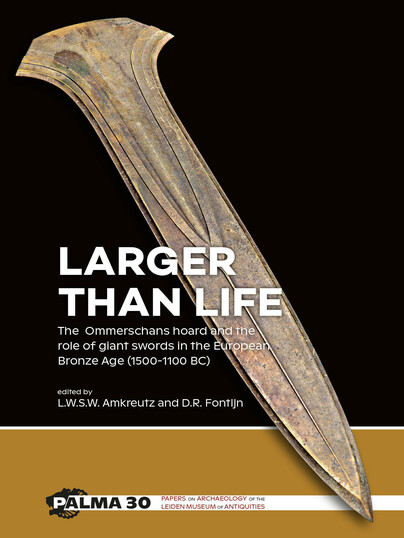
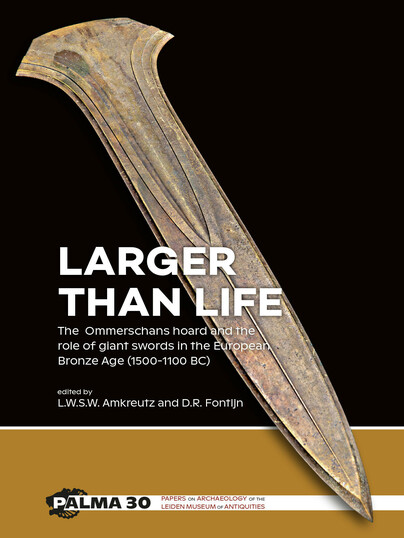
Pages: 400
ISBN: 9789464262612
Pub Date: 15 Sep 2024
Series: PALMA
Illustrations: 169fc / 44bw
Pages: 400
ISBN: 9789464262605
Pub Date: 15 Sep 2024
Series: PALMA
Illustrations: 169fc / 44bw
Description:
In 1896 a remarkable hoard was discovered near Ommerschans in the eastern Netherlands that included a spectacular object: a giant bronze sword. It was obtained by the landowner and kept by a forester, until it was first documented by archaeologist J.H.
Holwerda in 1927. For over 85 years it remained in private ownership and inaccessible to science. Over time this sword, or rather dirk, would prove not to be a singular exception. Instead it is now part of a select family of six discovered in England (Oxborough and Rudham), France (Plougrescant and Beaune) and the Netherlands (Jutphaas and Ommerschans). In 2017 the Ommerschans hoard was obtained by the Dutch National Museum of Antiquities, bringing all six into the public domain.The Plougrescant-Ommerschans type swords are some of the most spectacular finds of the European Bronze Age. They are extremely rare, beautiful, expertly crafted and too large and heavy to wield as weapons. Furthermore, their strong resemblance seems to have been crucial, as all six are extremely alike in design, decoration, metal composition and size (with the exception of Jutphaas). But why?This book aims to unravel some of the mysteries surrounding this exceptional group of larger-than-life Bronze Age blades. It offers a detailed overview of the discovery and find context of the Ommerschans hoard, as well as a physical description and analysis of all finds. Also included is a comparative overview of the other five swords, including the primary publication of the Rudham dirk. The findings are subsequently interpreted focusing on their contextualisation within Bronze Age deposition practices, the importance of the visual cohesion of this group, the power and role of aggrandised objects and their potential purpose within the social and metaphysical realm of Bronze Age communities.
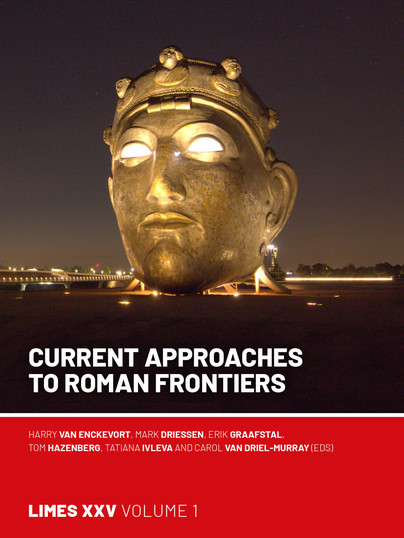
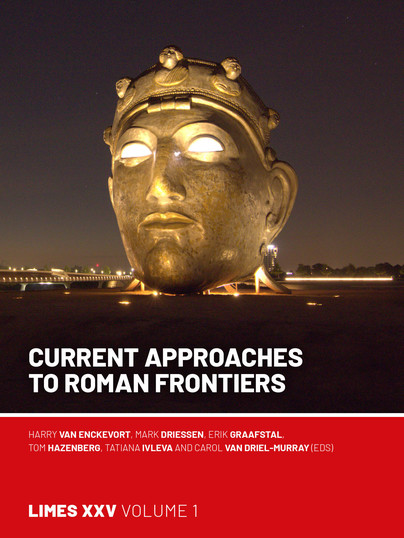
Pages: 340
ISBN: 9789464262766
Pub Date: 02 Sep 2024
Illustrations: 195fc / 20bw
Pages: 340
ISBN: 9789464262759
Pub Date: 02 Sep 2024
Illustrations: 195fc / 20bw
Description:
This publication – Current Approaches to Roman Frontiers – is the first volume of the LIMES XXV’s congress proceedings arranged around the original sessions, in order to form coherent thematical collections that make the vast output more accessible to generalists and specialists alike. This volume starts with a recap of the congress. Regarding the themes it deals with a contemporary feminist approach; new digital methodologies and computational modelling; three themes on archaeological heritage management dealing inter alia with preservation, protection, citizen science and World Heritage aspects, and a comparison between the Roman Limes and the Great Wall of China.
It ends with an overview of the sessions and lectures of the congress in Nijmegen.Frontiers are zones, or lines, of contact and coercion, of exchange and exclusion. As such they often express some of the most typical elements of the socio-political spaces that are defined by them. Spanning some 6,000 km along rivers, mountain ranges, artificial barriers and fringes of semi-desert, the frontiers of the Roman empire offer a wide variety of avenues and topics for a very diverse community of scholars. They are the central subject of the International Congress of Roman Frontier Studies (or just Limes Congress after the Latin word for ‘border’), organised every three years since 1949. This four-volume publication contains most of the papers presented at the 25th edition which was hosted by the municipality of Nijmegen in August 2022.
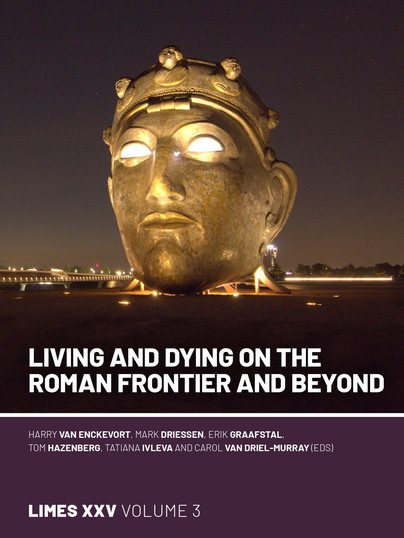
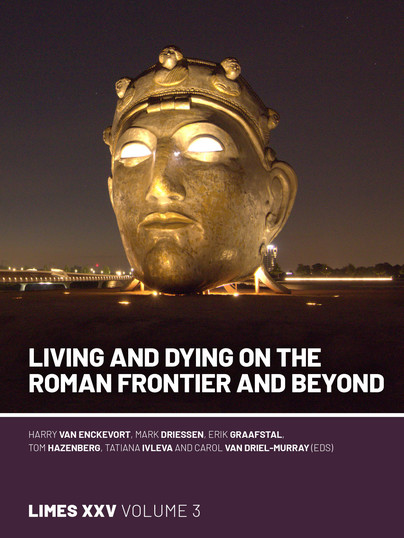
Pages: 400
ISBN: 9789464262827
Pub Date: 02 Sep 2024
Illustrations: 161fc / 22bw
Pages: 400
ISBN: 9789464262810
Pub Date: 02 Sep 2024
Illustrations: 161fc / 22bw
Description:
This publication – Living and Dying on the Roman Frontiers and Beyond – is the third volume of the LIMES XXV’s congress proceedings and deals with a variety of themes, including the iconography of victory; aspects of frontier societies; mobility and the place of children; funerary archaeology; the significance of Roman imports beyond the frontiers. The proceedings are mostly arranged around the original sessions, creating coherent thematical collections that make the vast output more accessible to generalists and specialists alike.Frontiers are zones, or lines, of contact and coercion, of exchange and exclusion.
As such they often express some of the most typical elements of the socio-political spaces that are defined by them. Spanning some 6,000 km along rivers, mountain ranges, artificial barriers and fringes of semi-desert, the frontiers of the Roman empire offer a wide variety of avenues and topics for a very diverse community of scholars. They are the central subject of the International Congress of Roman Frontier Studies (or just Limes Congress after the Latin word for ‘border’), organised every three years since 1949. This four-volume publication contains most of the papers presented at the 25th edition which was hosted by the municipality of Nijmegen in August 2022.
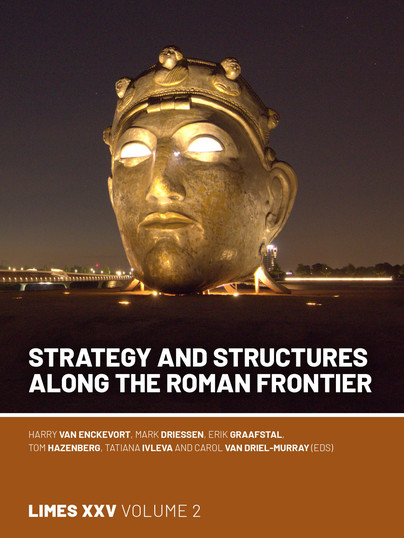
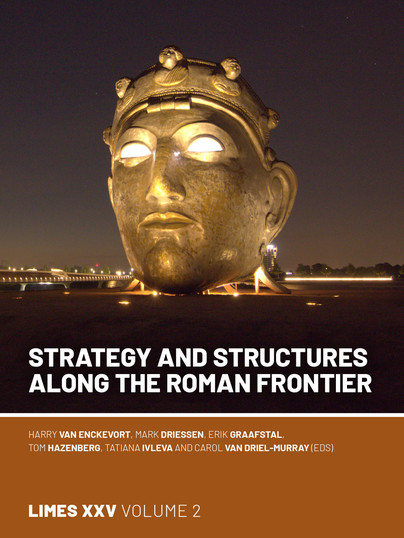
Pages: 390
ISBN: 9789464262797
Pub Date: 02 Sep 2024
Illustrations: 154fc / 43bw
Pages: 390
ISBN: 9789464262780
Pub Date: 02 Sep 2024
Illustrations: 154fc / 43bw
Description:
This publication – Strategy and Structures along the Roman Frontiers – is the second volume of the LIMES XXV’s congress proceedings and deals with the following themes: Roman military activities during the Republic; the early frontier formation processes and tribal reshuffling; new insights in the installations of the Roman armies; an odyssey along different Limes regions; the collapse of Roman frontiers; the afterlife of frontier fortifications. The proceedings are all arranged around the original sessions, creating coherent thematical collections that make the vast output more accessible to generalists and specialists alike.Frontiers are zones, or lines, of contact and coercion, of exchange and exclusion.
As such they often express some of the most typical elements of the socio-political spaces that are defined by them. Spanning some 6,000 km along rivers, mountain ranges, artificial barriers and fringes of semi-desert, the frontiers of the Roman empire offer a wide variety of avenues and topics for a very diverse community of scholars. They are the central subject of the International Congress of Roman Frontier Studies (or just Limes Congress after the Latin word for ‘border’), organised every three years since 1949. This four-volume publication contains most of the papers presented at the 25th edition which was hosted by the municipality of Nijmegen in August 2022.
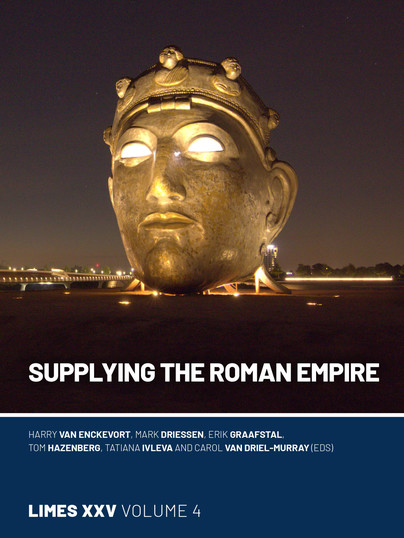
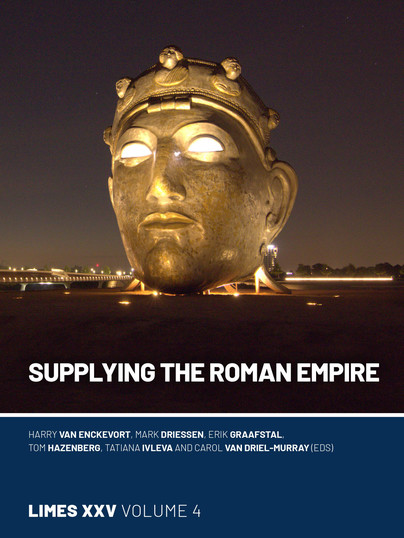
Pages: 330
ISBN: 9789464262858
Pub Date: 02 Sep 2024
Illustrations: 157fc / 23bw
Pages: 330
ISBN: 9789464262841
Pub Date: 02 Sep 2024
Illustrations: 157fc / 23bw
Description:
This publication – Supplying the Roman Empire – is the fourth volume of the LIMES XXV’s congress proceedings and deals with various aspects of the supply and provisioning of the Roman empire, and the role of the Roman armies housed on its fringes herein. The result is a wide-ranging collection of papers dealing with topics such as: finds of organic material; riverine and maritime supply and security; militarily controlled mining; building material procurement and processing; agro-political schemes and water management; military material culture. The proceedings are all arranged around the original sessions, trying to create coherent thematical collections that make the vast output more accessible to generalists and specialists alike.
Frontiers are zones, or lines, of contact and coercion, of exchange and exclusion. As such they often express some of the most typical elements of the socio-political spaces that are defined by them. Spanning some 6,000 km along rivers, mountain ranges, artificial barriers and fringes of semi-desert, the frontiers of the Roman empire offer a wide variety of avenues and topics for a very diverse community of scholars. They are the central subject of the International Congress of Roman Frontier Studies (or just Limes Congress after the Latin word for ‘border’), organised every three years since 1949. This four-volume publication contains most of the papers presented at the 25th edition which was hosted by the municipality of Nijmegen in August 2022.
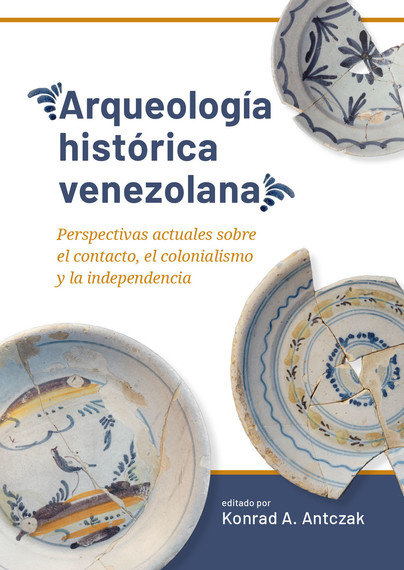
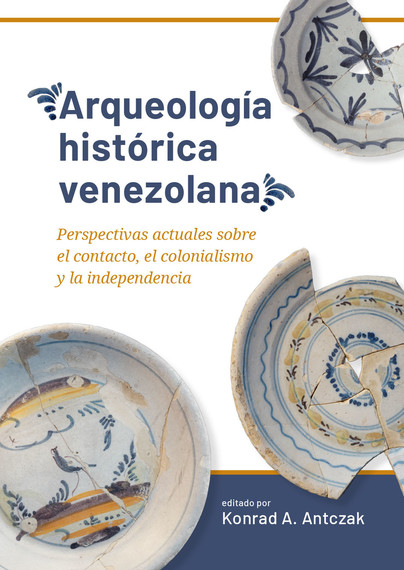
Pages: 582
ISBN: 9789464270976
Pub Date: 12 Jul 2024
Series: Taboui
Illustrations: 125fc / 45bw
Pages: 582
ISBN: 9789464270969
Pub Date: 10 Jul 2024
Series: Taboui
Illustrations: 125fc / 45bw
Description:
Este volumen ofrece una visión panorámica de la arqueología histórica de Venezuela, siendo la primera vez que un estudio de esta índole está disponible tanto en inglés como en español. Reúne el trabajo de destacados arqueólogos venezolanos e incluye trabajos de campo recientes e investigaciones inéditas, abarcando una amplia gama de estudios de caso desde la época precolonial hasta el periodo republicano.Estructurado en cinco partes, el libro comienza con una revisión exhaustiva de la arqueología histórica venezolana, destacando sus contribuciones y sugiriendo futuras direcciones.
La primera sección explora las realidades indígenas precoloniales y del periodo de contacto, mientras que la segunda examina las experiencias indígenas del colonialismo, la misionización y la transformación de paisajes. La tercera sección investiga la producción de importantes bienes venezolanos: el café, el azúcar y la sal, así como las actividades de contrabando. La cuarta sección se centra en la arqueología de ciudades fundacionales como Coro, Santo Tomé, Maracaibo y Caracas. La quinta sección examina la vida cotidiana, incluido el auge del consumismo y las prácticas sociales en torno a la muerte. Un epílogo subraya la necesidad de un enfoque histórico crítico en la antropología y la arqueología.Profusamente ilustrado y referenciado, este libro pone de relieve la extensa y diversa investigación arqueológica histórica en Venezuela, ofreciendo nuevas perspectivas a los académicos hispanohablantes y no hispanohablantes. Su presentación bilingüe aspira a influir en la arqueología histórica de América Latina, el Caribe y el resto del mundo.
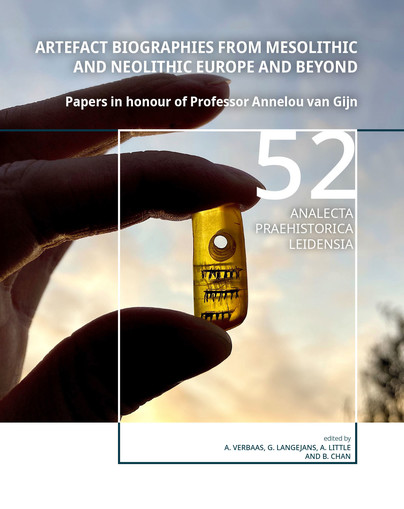
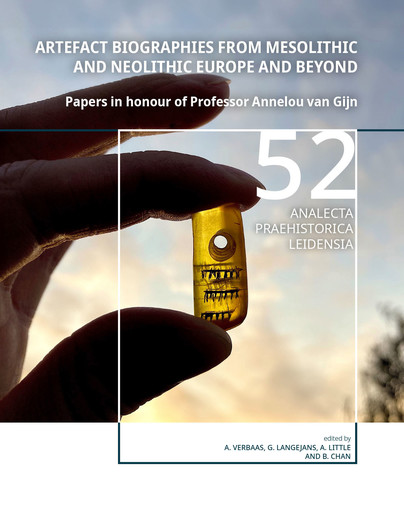
Pages: 220
ISBN: 9789464261523
Pub Date: 10 Jul 2024
Series: Analecta Praehistorica Leidensia
Illustrations: 81fc / 14bw
Pages: 220
ISBN: 9789464261516
Pub Date: 10 Jul 2024
Series: Analecta Praehistorica Leidensia
Illustrations: 81fc / 14bw
Description:
This volume has been written in honour of Professor Annelou van Gijn in order to celebrate her distinguished career as an archaeologist and, above all, as an expert in the study of material culture. Annelou started her research with the use-wear analysis of prehistoric flint from the Netherlands, and she extended her interests in every possible direction: time, space, materials and technologies. This volume has been compiled to reflect the broad oeuvre of her work.
It focuses on the biographies of a wide range of artefact types made from an equally wide range of materials from Mesolithic and Neolithic Europe, but also glimpses beyond into other periods and geographic regions. The papers focus on different aspects of artefact biographies including raw material acquisition, artefact production, use, and discard, and even the afterlife of objects in our modern society. The objects in question include quotidian tools such as querns and harvesting tools, adhesives that held objects together, and elaborate objects such as maceheads, jewellery, and flint superblades.Whatever the subject of Annelou’s individual publications, at the heart of all of her work is the love of objects and the stories that they have to tell us. The stories in this bundle are a testament of her contagious enthusiasm.
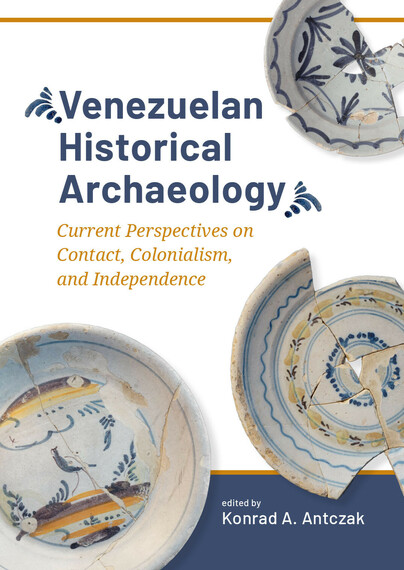
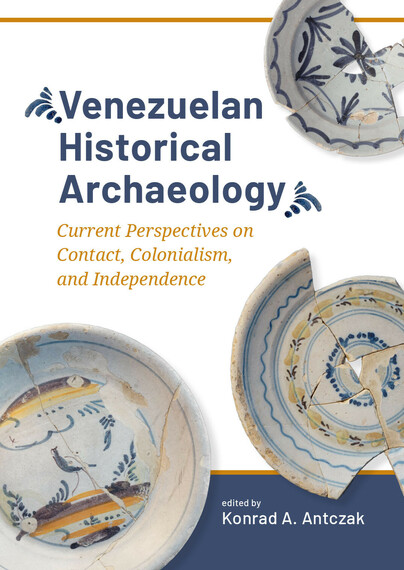
Pages: 582
ISBN: 9789464270945
Pub Date: 10 Jul 2024
Series: Taboui
Illustrations: 125fc / 45bw
Pages: 582
ISBN: 9789464270938
Pub Date: 10 Jul 2024
Series: Taboui
Illustrations: 125fc / 45bw
Description:
This volume offers a comprehensive overview of the historical archaeology of Venezuela, marking the first time such a detailed study is available in both English and Spanish. It compiles the work of leading Venezuelan archaeologists and includes recent fieldwork and unpublished research, covering a wide range of case studies from precolonial times to the republican period.Structured in five parts, the book starts with a thorough review of the history of Venezuelan historical archaeological research, highlighting its contributions and future directions.
The first section explores precolonial and contact period indigenous realities, while the second examines the indigenous experiences of colonialism, missionization, and landscape changes. The third section investigates the production of key Venezuelan commodities: coffee, sugar, salt, and contraband activities. The fourth section focuses on the archaeology of foundational cities like Coro, Santo Tomé, Maracaibo, and the development of Caracas. The fifth section looks at everyday life, including the rise of consumerism and the social practices surrounding death. An afterword emphasizes the importance of a critical historical approach in anthropology and archaeology.Richly illustrated and well-referenced, this book highlights the extensive and diverse historical archaeological research in Venezuela, offering new insights to both Spanish and non-Spanish-speaking scholars. It aims to influence historical archaeology in Latin America, the Caribbean, and globally with its bilingual presentation.
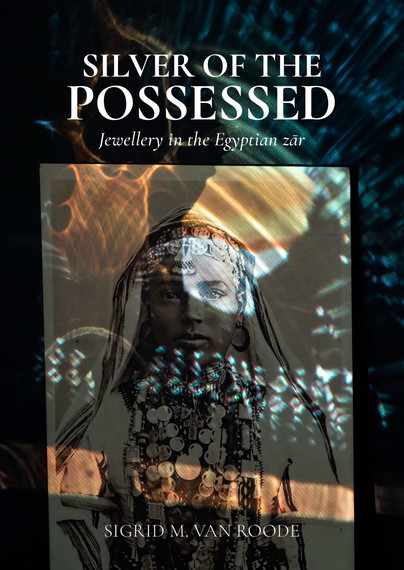
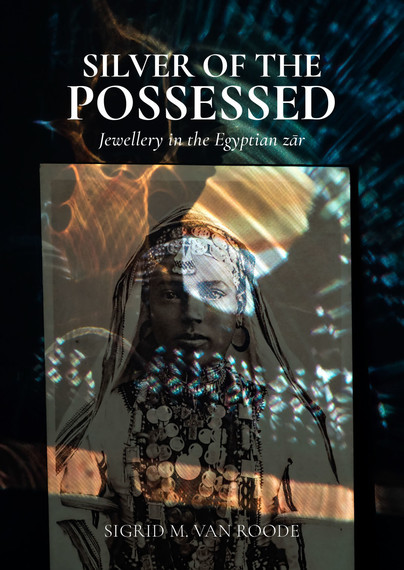
Pages: 212
ISBN: 9789464280739
Pub Date: 27 Jun 2024
Illustrations: 155fc / 7bw
Pages: 212
ISBN: 9789464280722
Pub Date: 27 Jun 2024
Illustrations: 155fc / 7bw
Description:
In the 19th century an African possession cult called zār arrived in Egypt and became hugely popular. Jewellery formed an integral part of this cult, and silver pendants with images of spirits started to appear in the early 20th century. And there is more: zār also used beaded jewellery as well as a wide range of other jewels.
Currently, jewellery items with spirit images are sought-after collectors’ items, present in collections of both private collectors and museums. These collections also hold a wide variety of other pieces called ‘zār jewellery’, and many jewellery pieces labelled ‘zār’ are available online. But what is ‘zār jewellery’, exactly?With collectors, curators, historians and ethnographers in mind, Silver of the Possessed places jewellery of the Egyptian zār in its cultural and historical context. A catalogue of previously unpublished jewellery in private collections illustrates the changes in this jewellery over the course of nearly a century, while the book itself addresses Egyptian zār jewellery from multiple angles.First, it analyses how our current understanding of this jewellery has evolved through collecting and publishing. Examining its cultural background in African possession cults results in a new insight of the many roles jewellery played in zār, observing jewellery as a financial asset allows us to grasp its implications for household economy dynamics, while looking at jewellery in a diachronic perspective may even reveal changes in the ritual itself. Finally, this study explores its potential as an actual historic source: these jewellery items shed light on the world view of their wearers, and as such form an unexpected additional source for late 19th and early 20th century Egypt.
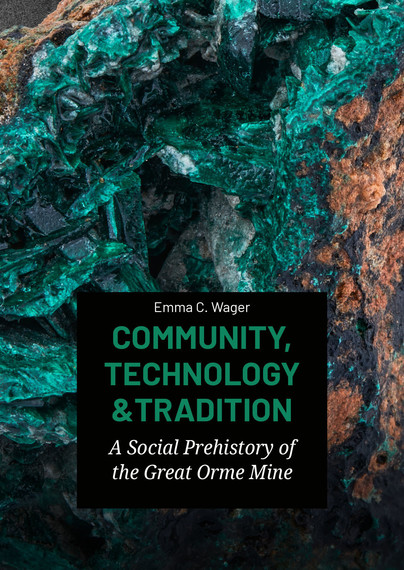
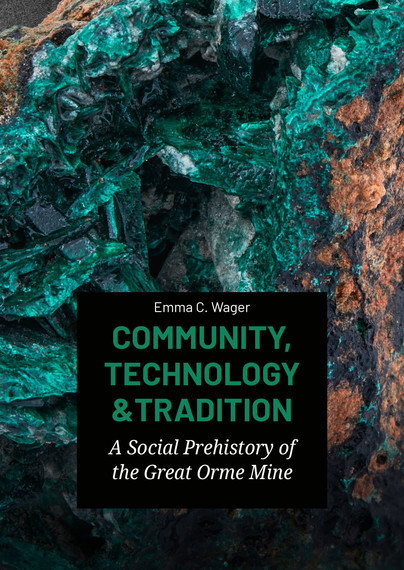
Pages: 192
ISBN: 9789464270914
Pub Date: 04 Jun 2024
Illustrations: 23fc / 34bw
Pages: 192
ISBN: 9789464270907
Pub Date: 23 May 2024
Illustrations: 23fc / 34bw
Description:
In the second millennium BC, mining for copper ore on the Great Orme, Wales, created one of Europe’s largest surviving prehistoric copper mines. The ore from the mine was smelted into metal that was cast and worked into the rich variety of copper and bronze objects synonymous with the Bronze Age in Britain and Europe.This book presents an original synthesis and reinterpretation of the complex prehistoric archaeology of the Great Orme mine.
It uses previously unpublished data in a novel and comprehensive analysis to determine where, when and how mining took place at this landmark site during the Bronze Age.The author draws on a wealth of information on the archaeology of the contemporary landscape and practices of metal production and working to examine the social nature of prehistoric mining. Observations are offered and conclusions drawn about who participated in mining; the character of social relations at the mine; the relationship between mining and identity; and how mining for copper ore shaped the miners’ worldview.Well supported by the evidence and embedded in contemporary theoretical discussions of Bronze Age social life, this significant study establishes an important research agenda for ongoing work at the Great Orme mine and makes a substantial contribution to broader debates about the nature of Bronze Age society. It offers for the first time a fully contextualised interpretation of Bronze Age mining in Britain from the perspective that it was a fundamentally social activity. Community, Technology and Tradition is for anyone interested in prehistoric mining and metallurgy, the British Bronze Age and the archaeology of past lives.
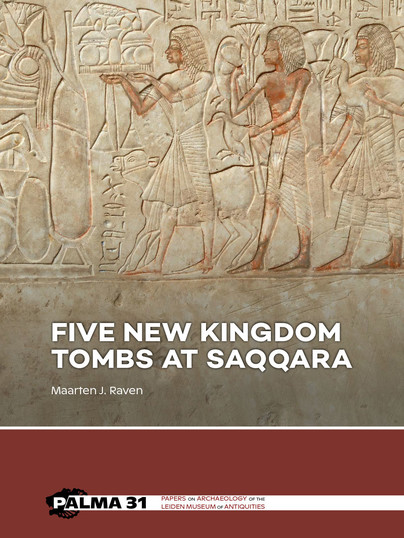
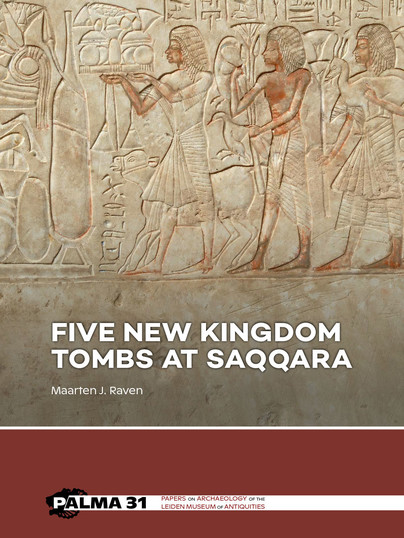
Pages: 442
ISBN: 9789464262728
Pub Date: 04 Jun 2024
Series: PALMA
Illustrations: 400fc/250bw
Pages: 442
ISBN: 9789464262711
Pub Date: 23 May 2024
Series: PALMA
Illustrations: 400fc/250bw
Description:
The five tombs dealt with in this book were explored between 2009 and 2017 by the Leiden-Turin Expedition in the New Kingdom necropolis of Saqqara. All of them can be described as minor tombs, constructed wherever some space was still available in the cemetery between the major monuments of 18th Dynasty date. Some of them were clearly built against the exterior walls of these previous monuments, whereas their unusual plans show how the builders had to adapt to the cramped conditions in the cemetery.
The five tombs vary in date from the very end of the 18th Dynasty to well into the Ramesside period. The most important one was built for Ry, an army officer who must have served under general (later Pharaoh) Horemheb. The rediscovery of his tomb finally enables us to understand the provenance of a whole series of reliefs now in the Berlin Museum and elsewhere.The set of five also comprises two tombs of priests in the temple of Ptah, the Memphite town god. Both Khay and Tatia served in the sanctuary as carrier of the divine barque during processions, combining this office with other jobs: chief royal gardener in the case of Khay, and chief of goldsmiths for Tatia. The latter was a contemporary of Pharaoh Ramesses II, whereas Khay seems to have lived slightly earlier.The tomb of Samut is a very humble affair consisting of a rare four-sided stela standing next to a simple burial shaft. The owner was a simple stone-mason or necropolis workman, and the presence of his funerary monument in what used to be an elite cemetery comes as a surprise. Less informative is the fifth tomb of this series, which is no more than an unfinished and anepigraphic limestone chapel with a now inaccessible shaft in front.
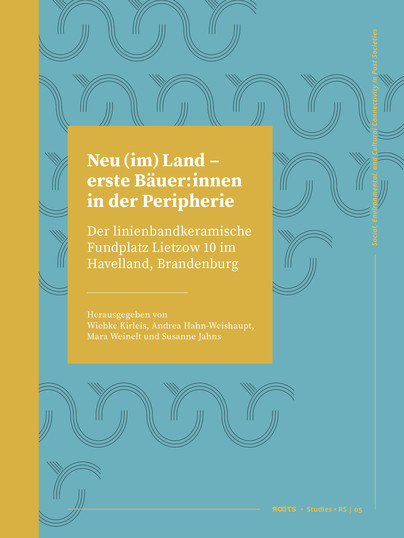
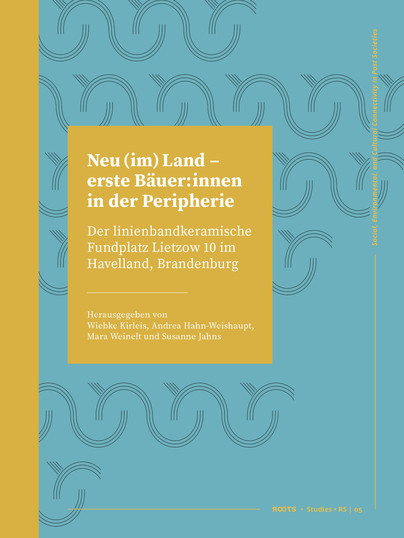
Pages: 170
ISBN: 9789464270884
Pub Date: 21 May 2024
Series: ROOTS Booklet Series
Illustrations: 32fc / 14bw
Pages: 170
ISBN: 9789464270877
Pub Date: 21 May 2024
Series: ROOTS Booklet Series
Illustrations: 32fc / 14bw
Description:
Bei einer Ausgrabung im havelländischen Lietzow in Brandenburg wurden jungsteinzeitliche Siedlungsbefunde entdeckt. Sie gehören zu zwei Hofstellen der jüngeren Linienbandkeramik, die um 5100-5000 v. u.
Z. datiert. Die in der äußersten Peripherie des damaligen bäuerlichen Siedlungsgebiets gelegene Siedlung Lietzow 10 bestand über ungefähr zwei Generationen. Die von dichtem Eichen-Kiefernwald umgebene Siedlung lag wie eine kleine Insel auf einer Grundmoränenplatte, die mit relativ fruchtbarem Boden und guter Grundwasserversorgung einen günstigen Standort für eine bäuerliche Existenz bot. Die nahen Niederungsgebiete waren zur gleichen Zeit von mesolithischen Wildbeutergruppen bewohnt.Die Analysen der zahlreichen Tier- und Pflanzenreste von Lietzow 10 zeigen das Bild einer voll entwickelten neolithischen Landwirtschaft mit dem Rind als wichtigstem Nutztier und Emmer als Hauptgetreide. Fischfang und wohl auch Sammelwirtschaft trugen in größerem Umfang zur Nahrungssicherung bei. Die Jagd spielte nur eine untergeordnete Rolle.Trotz ihrer randlichen Lage war die Siedlung aber keinesfalls isoliert. Der Großteil der Formen und Verzierungen des umfangreichen Keramikinventars zeigt deutlich den Einfluss aus dem mitteldeutschen Raum. Darüber hinaus sind weitreichende Fernbeziehungen bis Süddeutschland nachweisbar. Auch die Steinartefakte belegen Fernkontakte. Der Großteil der Steingeräte verweist auf ein regionales Netzwerk, da Flint und Mahlsteinrohstoff als Vollkerne von in einiger Entfernung zur Siedlung gelegenen Abbaustellen stammen. Hingegen fehlt ein eindeutiger Beweis für einen Austausch zwischen den mesolithischen und neolithischen Gruppen im Havelland.English abstractThis publication presents research on the first peasants of the Linear Pottery group in Brandenburg, northern Germany. The region is of particular interest because it is situated in the absolute periphery of the Linear Pottery area. The volume combines the results on settlement features, pottery and stone tools with archaeobotanical and archaeozoological studies on the diet and economy of these Neolithic people with focus on the site of Lietzow 10. This holistic approach fulfils a research desideratum, because the state of knowledge about such enclaves of agricultural life in the midst of the settlement area of forager groups is still incomplete.The excavation of the site Lietzow 10 yielded features from which a settlement site with two farmsteads could be reconstructed, which was inhabited for 2-3 generations. Large quantities of pottery were found, according to typology dating into the period around 5100 to 5000 BCE at the latest, i.e. to the younger LBK. Several radiocarbon dates support this chronological classification and confirm the Linear Pottery chronologies from Central Germany for Brandenburg features.Despite its peripheral location, the settlement site was by no means isolated; the pottery finds even attest to long-distance contacts. The supply of raw material for the stone implements points to a regional network, for flint and grindstone raw material were not extracted in the vicinity of the site, but were apparently mined some distance away.The archaeozoological and archaeobotanical investigations – for the latter, samples from other Neolithic settlements in Havelland were also available – provide insights into the economic practices and diet of the settlers. The cereals found were almost exclusively emmer, other crops were flax and pea. Animal husbandry was of outstanding importance for the food supply. Among the domestic animals, cattle probably played the greatest economic role, but pigs and small ruminants were also significant. Both, the crop and the domestic animal evidence show a fully developed agriculture. In addition, there is evidence for extensive gathering. Hunting – unlike fishing – did not play a major role in the diet, although wide range of game species is represented.
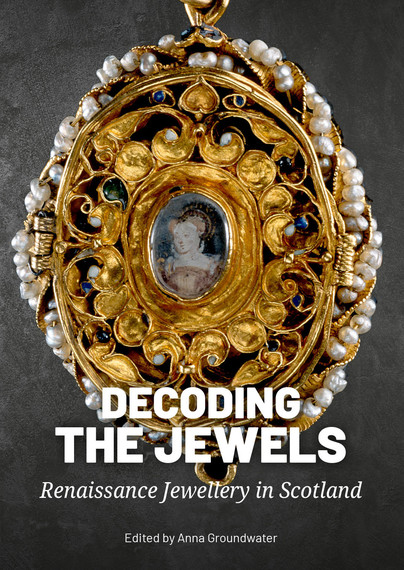
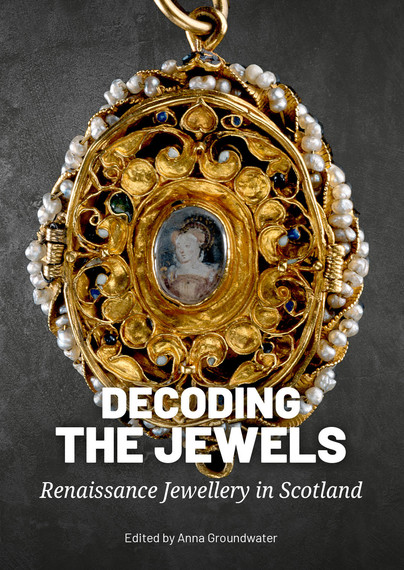
Pages: 200
ISBN: 9789464262582
Pub Date: 15 May 2024
Illustrations: 104fc / 3bw
Pages: 200
ISBN: 9789464262575
Pub Date: 15 May 2024
Illustrations: 104fc / 3bw
Description:
For the first time, National Museums Scotland’s important collection of Renaissance jewellery from Scotland is considered together in this fully illustrated volume alongside significant items from the Royal Collection. The book was inspired by the acquisition by NMS of the extraordinary Fettercairn Jewel: the fine iconography of this exquisitely enamelled locket held coded messages for its sixteenth century owners, and continues to intrigue its viewers today. Renaissance jewellery like this in Scotland is particularly notable given the rare survival of such jewels from the sixteenth century.
Some of these owe their survival thanks to their association with Mary, Queen of Scots.Elite Renaissance men and women commissioned, wore and gifted intricate and valuable pieces of jewellery. For most, this was not simply adornment, but used to communicate messages and display status. These were intimate personal possessions and suggest the meanings invested in them by their owners, that resonate with audiences today. Such jewels are evocative objects.This lavishly illustrated book brings together expert voices from the key Scottish collections (National Museums Scotland, National Galleries of Scotland, Royal Collection Trust) to explore the making, meaning and function of such jewellery in sixteenth century Scotland, and features an interpretation of the Fettercairn Jewel by the jewellery expert Geoffrey Munn. It reveals hitherto underappreciated evidence of goldsmithing in Scotland while considering significant continental influences in the design and production of jewellery. Given the ephemeral nature, and rare survival of Renaissance jewellery, its authors also suggest alternative ways of tracing the gems that have gone, in the portraits and inventories of Scottish men and women.
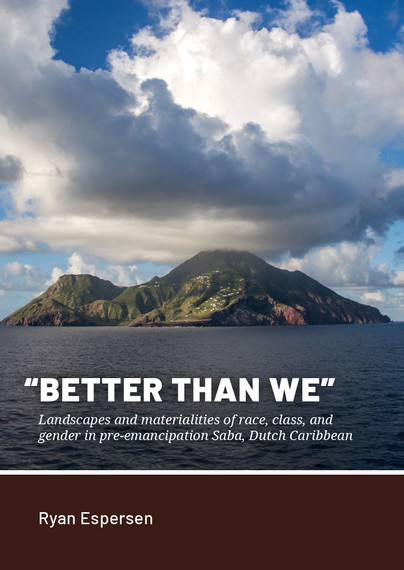
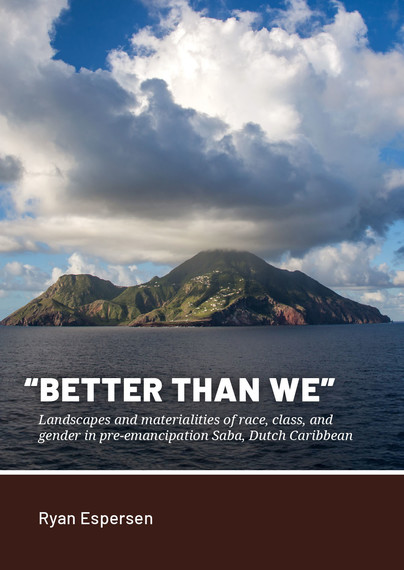
Pages: 402
ISBN: 9789464270792
Pub Date: 01 May 2024
Series: Taboui
Illustrations: 122fc / 32bw
Pages: 402
ISBN: 9789464270785
Pub Date: 01 May 2024
Series: Taboui
Illustrations: 122fc / 32bw
Description:
This study aims to understand the materiality of Saba’s ideological landscape during its pre-emancipation colonial period. This is accomplished by understanding the dialectics, or inseparable relationships, between Saba’s geography, locally-situated ideologies of class, race, and gender in Saba’s social environment, and the processes behind these ideological relations that contributed to the material things that are found across Saba’s social landscape.This provides insights into archaeologies of poverty, approaches towards differentiating between low class and slavery in the archaeological record, and the importance of powered perspectives in defining and situating poverty on local and regional scales.
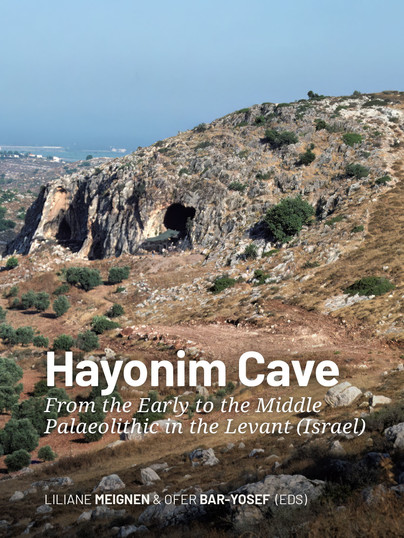
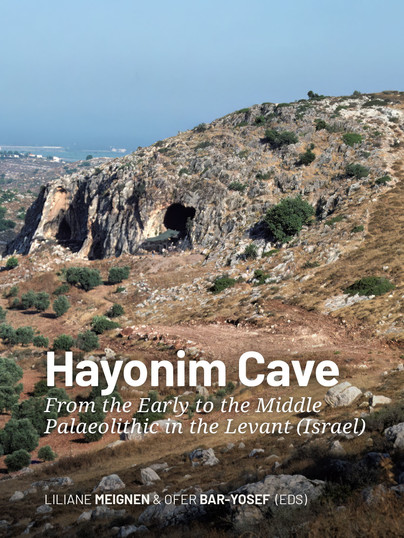
Pages: 306
ISBN: 9789464261868
Pub Date: 30 Apr 2024
Illustrations: 82fc / 51bw
Pages: 306
ISBN: 9789464261851
Pub Date: 15 Apr 2024
Illustrations: 82fc / 51bw
Description:
The research presented in this book results from an international interdisciplinary research program in Hayonim cave (Israel) from 1992 to 2000, directed by Prof O. Bar-Yosef (Harvard University) and L. Meignen (CNRS, France), and focusing on a long archaeological sequence dated to circa 300-140 000 years ago.
The intensive fieldwork and research following it allowed us to document an essential period of human history in the Levant: the end of the Lower Palaeolithic and Early Middle Palaeolithic, during which recent discoveries showed that the early H. sapiens, expanding out of Africa, reached SW Asia around 180-190 000 y ago.This book brings together the impressive findings of nine years of excavations and analysis by an interdisciplinary team of well-known scholars from US universities (Harvard, Boston, University of Arizona), Weizmann Institute (Israel) as well as from the French CNRS.Several complementary approaches are implemented to understand early human economic, cultural and behavioral changes observed at this crucial period. It is based on detailed studies of lithic artifact technology, the remains of systematic fire use and cave occupation by early humans, and foraging strategies that include the early development of human adaptations for hunting large prey. In the context of the highly debated cultural break observed at the end of the Lower Palaeolithic, we propose new interpretations based on these innovative results.This volume will provide a cornerstone for the history of humankind in a critical geographic region, at the crossroads between Africa and Eurasia.































